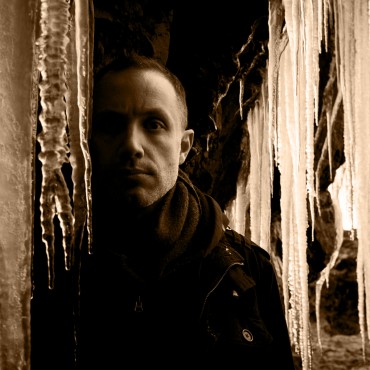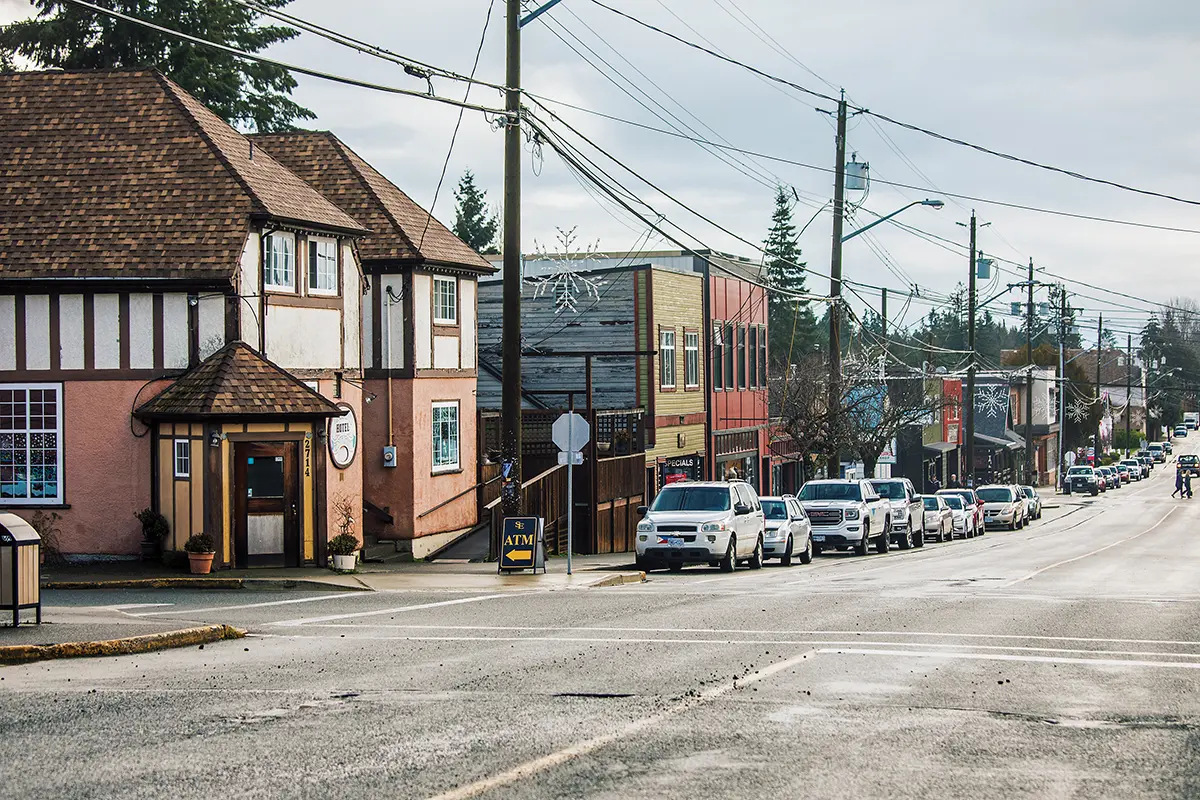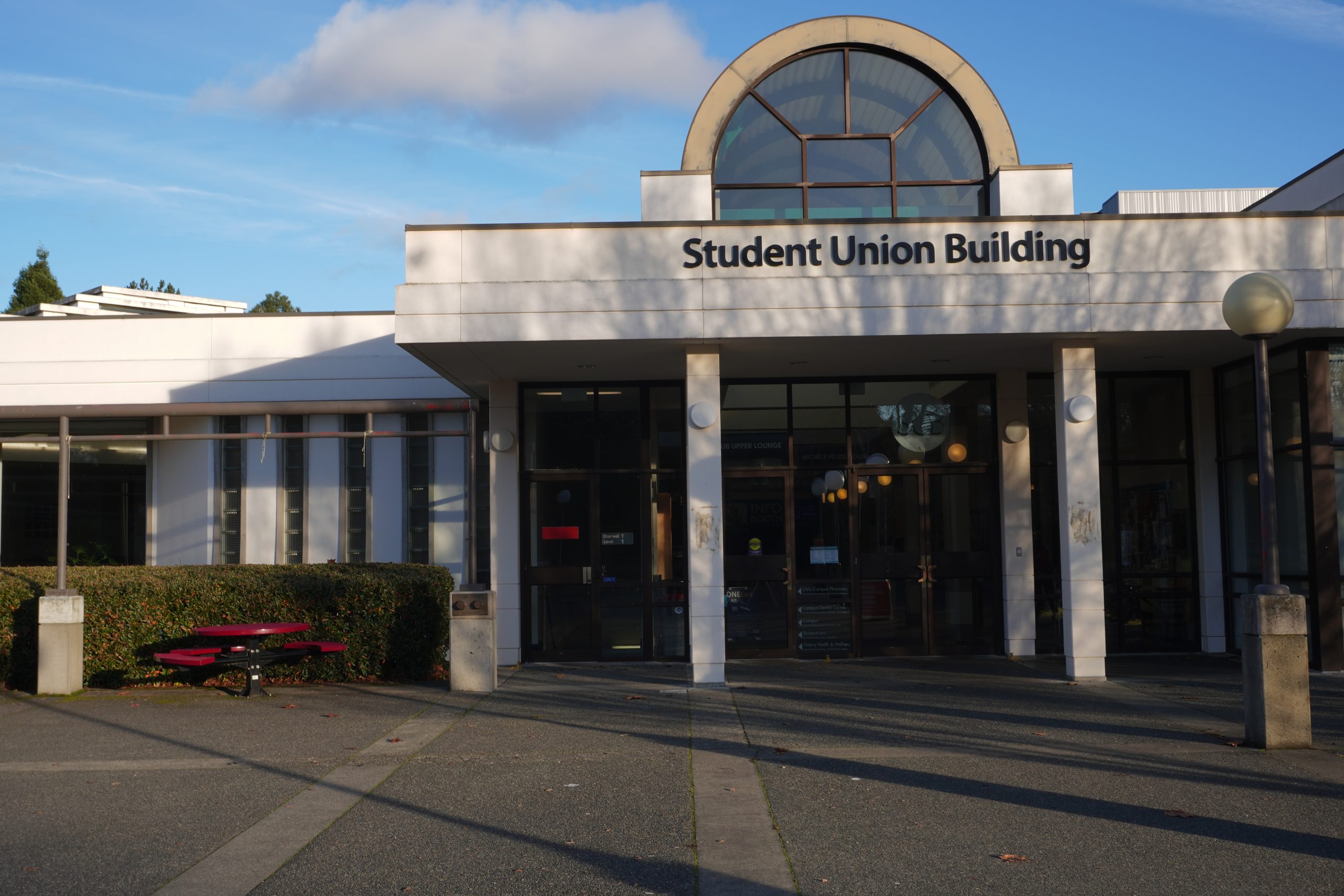On June 19, Pacific Northwest metal group Agalloch will make their Victorian debut at the Victoria Event Centre. On the same day, guitarist Don Anderson will be hosting a talk, titled Weaving Influences: Positioning Agalloch in the History of Heavy Metal, at the University of Victoria.
When Anderson isn’t bringing metal to the masses, he teaches in the English department at State University of New York Westchester Community College. To get a sense of what to expect, the Martlet spoke with Anderson over the phone to discuss the beginnings of Agalloch, his academic career, horror films, and coming to Vancouver Island. Some of the interview has been edited for space and clarity.
You started your undergrad around the same time as Agalloch released their first album. Is that about right?
Agalloch started technically ’96, when we started recording demo stuff. But the first album [Pale Folklore] didn’t come out until ’99, so that’d be right around when I started my major.
Was it always the intent to juggle both those endeavours? Or did it turn out that way by accident? What was that like?
I think a lot of bands would split up when members had to move far away but I think [it worked out] because initially Agalloch wasn’t a live band. And we didn’t have a lot of plans to become a live band, mainly because John [Haughm], for the first two records, did guitars, vocals, and drums, and we were just a three-piece. But I moved from Portland to Bellingham, and it never really dawned on us that I would quit the band, because I could still easily drive to rehearsals and we still didn’t tour very much. And we were able to, at that time, still send CD-Rs of demos and new songs back and forth. That’s how we did Ashes Against the Grain, from far apart.
With the internet, just about everything is possible, so now, I’m in New York, Aesop [Dekker’s] in San Francisco, so we can still make it work. Maybe it’s not quite as easy as me driving down from Bellingham or Seattle, but it’s just never dawned on us because first and foremost we’re all friends, and we’re a band second. So, I couldn’t imagine not being in a band or being in a band with someone other than the guys there, so we just make it work. The other guys have families, kids, and other demands, so it’s kind of like anything else. [My commitment] just happens to be academia.
I was reading in another interview that a big part of making it work was that you do spend a fair amount of time apart between albums, so you all kind of “go back” to it. That’s interesting that both Agalloch and university seemed to develop at the same time.
How did the talk at UVic come about?
It started because I went to graduate school with a professor there, Jentery Sayers. We were in the same year together, we had a lot of things in common, and he also, I don’t know if he still plays in a band, but he played in a band at the time. And so we sort of bonded over that. And, you know, we graduated and went our separate ways but we stayed in touch on Facebook and things like that, and I think when he saw we were coming through Victoria, he emailed me and asked for some info. And then a couple of emails later he asks if I wanted to give a talk at the university. At first, I didn’t really know what that would look like and what that would mean, and I wasn’t sure what to say, but I said “Ok, sure,” and he immediately put me in touch with Shamma [Boyarin]. Shamma contacted me right away and it turned into a much more of a pretty legitimate kind of talk, and I started thinking more about it . . . Because I had been thinking about doing some kind of writing project on heavy metal now that I’m free of the PhD program and the dissertation program, and I was wondering “What do I really want to think and write about?” And one of the ideas was, well, heavy metal seemed an obvious choice. So I think the talk’s gonna pull ideas that I’m thinking about in terms of how to think of heavy metal history and how to account for certain moments in that history in particular. So that’s how it all came about.
What are your thoughts around academia and heavy metal in general? Because in my experience, it seems like sort of a new thing. It’s always sort of been there, but it’s been blowing up in the last few years. What are your thoughts?
You know, as an academic, I’m always interested in thinking rigorously about anything, whether it’s film, culture, music, politics, or philosophy. I don’t think there’s anything that shouldn’t be thought about in a rigorous fashion. And so of course I feel like there’s always been tension with academia sort of absorbing or welcoming certain types of artistic movements that may be seen as ‘anti-establishment’ or sort of hostile to being commodified. But that’s the history of art. There was a time when nobody ready Kerouac, or Ginsberg, or Burroughs, and now they’re part of the canon.
And even before metal, punk rock started to be kind of . . . a lot of very intellectual books were written about punk rock and were sort of archiving the history of punk rock, and I’m seeing that happen with metal now more than ever. So I think that’s very good, and I guess the question is — one of the questions that needs to be asked, for example — you know, with Sam Dunn, the first documentary [Metal: A Headbanger’s Journey], I don’t think asked any significant questions. The Global Metal one, I thought, was really, really good. I felt it had a really great argument about inclusivity and cultures tackling the question of religion, especially in regards to Orphaned Land and Israel, and matters like this, and I thought that was significant and important work. It kind of went against the idea that heavy metal is just about rebellion and not fitting in. I think if we’re going to include work on heavy metal in academia, we have to go beyond those sorts of very ‘common sense’ ideas about what heavy metal is.
And so, I also think there needs to be more work done, and I think [Dunn] touched on it with regards to gender and sexuality, and issues like that, that have always been sort of ignored or repressed, and there’s actually a lot of work that should be done in those areas, which I’m seeing here and there, these sort of queer readings of heavy metal. Particularly with recent coming-outs of Gaahl and Rob Halford and [Paul Masvidal and Sean Reinert] from Cynic. I think there’s a lot of good stuff to be done.
With your current research focuses, you look more at horror and film. Does heavy metal ever find its way into that?
I did do a chapter for my MA thesis on black metal; it was part of a larger inquiry about genuine representations of death in art. One chapter of the thesis came out last year titled “How the Horror Film Broke its Promise: Hyperreal Horror and Ruggero Deodato’s Cannibal Holocaust” in the journal Horror Studies. I remember talking to our bass player, Jason [William Walton], and we were talking about Mayhem, the De Mysteriis Dom Sathanas record, and we’re talking about how it’s one of our favourite black metal records, and then he made the comment that sort of helped launch my MA thesis. He said, “I just feel like the music is more grim because of the history.” So that got me thinking, and it’s interesting because death becomes an aesthetic thing. Part of my enjoyment of Mayhem has to do with the very real authentic elements of death, and I thought that was interesting because genuine, or authentic death is something that we tend to avoid as an aesthetic element. Part of the appeal of Cannibal Holocaust, outside of any moral apologia, is that it has very violent animal deaths. Obviously I don’t condone this, but I’d be dishonest in saying that didn’t have some kind of semiotic, or even aesthetic appeal, as a horror fan working with disturbing material.
As I argue in this one article, horror film works on an implied promise that no one was hurt despite everything you see. And my argument is that Cannibal Holocaust breaks that promise. That’s what makes it so fascinating. So that’s what really launched that idea with black metal: the fact that, these are bands that participated in a sort of ‘terrorism’, burning churches. And so you previously had bands like Slayer singing about it, and now you have real genuine actions. And the Real became this sort of semiotic element of the overall representation.
I have a question from a friend, Sean Harrison. Your music transports its listeners, and transport is associated with religious ecstasy, and so he was wondering if you could explain the ecstatic or transporting qualities of your music in terms of historical ecstatic tradition?
I can answer that question both personally, and sort of in a very general sense that the act of producing music live . . . I mean, if we think of religion as this thing that’s bigger than ourselves, we go to church as a community, and what sort of glues it all together is that we’re there to participate in something bigger than ourselves, ie. God. And I think the production of music operates in much the same way. If the bass stops playing and the drums stop playing, it’s just me playing guitar. There’s no ‘whole’ that is greater than it’s parts. But when all four of us are playing together, that’s kind of religious and transcendental in that sense that we’re producing a whole that’s outside of us, but dependent on each individual piece that alone would be nothing.
So combined, it becomes something greater. That’s definitely a very religious way of thinking about it. And I think that’s true of all communal productions of art. Not that a painter can’t achieve a kind of transcendence working by himself, but there’s something about being on stage, producing music that’s very loud, where you can feel the vibrations. But also the reciprocal energy that you have with the audience who are also reacting. They’re singing the lyrics, and it becomes very religious because they’re singing with you, and it’s really transcendental in the sense that I’m beyond myself, and we’re beyond one another. And that’s very ecstatic. It’s probably the closest thing I’ve had to a religious experience, in that moment when everything clicks.
There’s a song we don’t do in the liveset this time . . . We end each set on a very catastrophic song that really builds up, and on the previous tours it was “Bloodbirds” from Ashes Against the Grain. That song was always a very cathartic, almost religious ritual. And this tour, it’s the closing song off the new album, “Plateau of the Ages”, and so we build, build, build, and it gets crazy, instruments get smashed, and strings break. And as soon as it’s over, I’m exhausted like I’ve been praying for hours. And I go backstage and sit down and just — phew! And in that way, it’s a very transcendental experience. I hope that answers the question, but that’s how I would describe it.
So the tour starts in a couple of weeks. You released The Serpent & the Sphere almost a year ago; is this the first time you’ve been out supporting it?
On the West Coast, yes. We immediately did an East Coast jaunt for about three weeks [after release]. A lot of that is just because of the school schedule, so we went with the summers and the winter break, and so last summer was East Coast, and this summer will be West Coast, and we’ll go over to Europe for a month before the fall.
This is the first time you’ve been through Victoria. It’s a big deal for us, seeing the bigger acts come by this way, and I assume the enthusiasm is mutual?
Yes, I love Victoria. I’ve visited it many times, I honeymooned there with my wife, so yeah, it’s really one of my favourite cities in Canada. It’s always been very accessible, living in Seattle and Bellingham, it’s easy to catch a ferry. I’ve toured the wine country there, I bought a lot of records there, I’ve had tea at the Empress a few times. I’ve had good coffee, beer, and it’s a wonderful city. I’m pretty sure some of the other guys have been there, but I dunno if Aesop has. I’m looking forward to finally playing there and seeing the university too.
I know there’s a bevy of metal fans who are looking forward to seeing you.
I appreciate everybody’s excitement [for the talk and the show]. It’s mutual and we’re looking forward to playing Victoria!
Weaving Influences: Positioning Agalloch in the History of Heavy Metal takes place June 19, from 2–3 p.m. at UVic, Cornett Building B111. Agalloch plays the Victoria Event Centre that night with guests Helen Money at 8 p.m.









